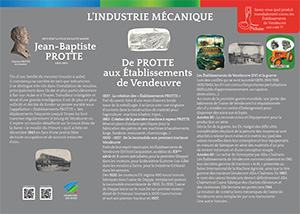Voici les différents panneaux du circuit patrimonial Mélusine :
Industrie Mécanique
The Engineering Industry
Do you know which world-famous product the Établissements de Vendeuvre developed?

Charles PROTTE
successor
BORN IN PONT LA VILLE IN HAUTE-MARNE
Jean-Baptiste PROTTE
(1815-1893)
The son of a family of paddle mill workers, he started his career as a mechanic.
He soon made a name for himself installing mills, mainly in the Aube region and especially in Bar-sur-Aube and Troyes.
A relentless worker exhibiting great wisdom, he received an increasing number of requests and opted to set up his own company under the name ‘Établissements PROTTE’. His frequent trips to Troyes led him to travel through Vendeuvre regularly. There he spotted an abandoned mill on the Barse River, ‘Le Moulin du Prieuré’ (the Priory mill), which he acquired in December 1843. The mill was located opposite an unoccupied meadow, which was, furthermore, surrounded by water.
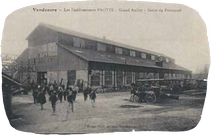
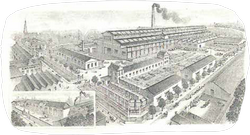
From PROTTE to Établissements de Vendeuvre
1837: Foundation of the ‘Établissements PROTTE’
Thanks to the expertise of some twenty local metalworkers, he began manufacturing agricultural equipment: threshing machines, etc.
1863: Launch of the first PROTTE steam engine
He introduced dedicated workshops for the manufacture of machine parts (boiler making, forging, foundry, carpentry, etc.)
1900 - 1937: From the traction engine to the first Vendeuvre tractors
Backed by their visionary spirit, the Établissements de Vendeuvre (EV) acquired three factories specialised in engines in the early 20th century. The first (in Dieppe) operated in engines, the second (in Lomme-Lez-Lille) in flour mills, and the third (in Orléans) in seeders.
As early as 1920, the 400 rpm EV engines manufactured in the Dieppe factory replaced the bulky 1900 traction engines everywhere.
The Dieppe plant released its first 9-horsepower diesel engine running at 1000 rpm in 1930, and introduced its first tractor in 1937.
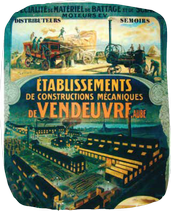
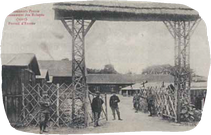
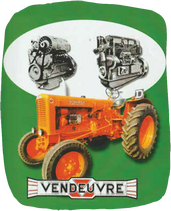
The Établissement de Vendeuvre (EV) and the war
During the successive conflicts (1870, 1914-1918, 1939-1945), EV experienced major disruptions (supply issues, enemy occupation, and destruction).
During the First World War, parts of the Vendeuvre factory buildings were commandeered to house a shelter to care for the wounded.
The 1950s: Reconstruction and outfitting for mass production.
Despite significant challenges resulting from the shortage of resources following the end of the war, EV undertook to restore the ruins and establish factories, new in both style and equipment, capable of mass-producing low-cost and flexibly designed equipment.
The 1960s: Takeover of the company by Allis-Chalmers.
In 1961, the Établissements de Vendeuvre marketed their last range of tractors, ‘the BL’, presented at the International Agricultural Machinery Exhibition, as well as the first range of Vendeuvre-Allis-Chalmers tractors. In 1967, the company changed its name to Allis Chalmers, and the factory manufactured forklift trucks and graders.
The plant closed around 1984 and the mechanical engineering vocation of the Vendeuvre factory was replaced by a joinery.
That’s another story…





